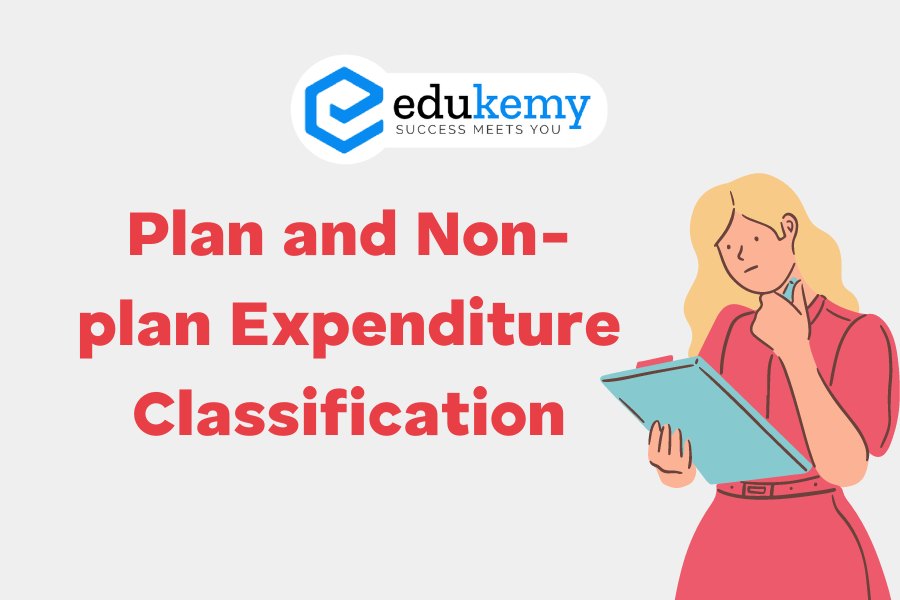
Plan and non-plan expenditure classification is a fundamental framework employed by governments to allocate and manage financial resources effectively. In the realm of public finance, particularly in countries like India, this classification system delineates expenditures based on their nature and purpose. The distinction between plan and non-plan expenditure lies in their strategic orientation: plan expenditure is earmarked for developmental projects and schemes outlined in the government’s annual plans, aiming to foster economic growth and social welfare, while non-plan expenditure encompasses recurring expenses such as salaries, pensions, and debt servicing, which are essential for administrative functions and maintenance. This classification serves as a pivotal tool for policymakers to prioritize spending, streamline budgetary allocations, and achieve targeted socio-economic objectives. Understanding the nuances of plan and non-plan expenditure is crucial for shaping fiscal policies that drive sustainable development and inclusive growth.
Traditionally, government budgets have classified expenditures into various categories to provide transparency and insight into spending patterns. One such classification was the division of expenditure into Plan and Non-plan categories. This distinction aimed to prioritize and differentiate spending on asset creation from maintenance activities.
Contents
Plan Expenditure: Asset Creation for Development
- Definition:
- Plan Expenditure was earmarked for activities focused on creating assets, including physical, human, and social capital. This category aimed at fostering development and enhancing the country’s infrastructure.
- Asset Creation Examples:
- Projects such as building dams, roads, power plants, and investments in social and human capital were categorized as Plan Expenditure. The goal was to contribute to long-term development objectives.
- Perverse Effects:
- Despite the positive intent, the classification led to unintended consequences. Asset maintenance, crucial for the sustainability of infrastructure, was designated as Non-plan Expenditure. This led to neglect of maintenance activities, creating a false perception of skewed spending priorities.
Non-plan Expenditure: Maintenance and Upkeep
- Definition:
- Non-plan Expenditure covered maintenance activities and the upkeep of existing assets. This included routine expenditures to ensure the functionality and longevity of previously created infrastructure.
- Maintenance Neglect:
- The negative perception associated with Non-plan Expenditure resulted in a neglect of maintenance activities. The public viewed higher spending on maintenance as a diversion from capital formation, even though it was essential for the sustainability of assets.
Reforms: Dropping the Plan and Non-plan Distinction (2017-18 Onward)
- Intent of Reforms:
- Recognizing the adverse effects of the Plan and Non-plan classification, the government decided to eliminate this distinction. The objective was to provide a more accurate representation of budgetary priorities and prevent the unintended consequences of neglecting maintenance and essential expenditures.
- Transparency and Public Perception:
- The reform aimed to present a more transparent picture of government spending. Dropping the Plan and Non-plan categorization addressed public misperceptions and ensured that necessary expenditures, including maintenance and social investments, were not overshadowed.
Conclusion: The historical classification of Plan and Non-plan Expenditure served a specific purpose but had unintended consequences. Reforms in 2017-18 to eliminate this distinction aimed to provide a more accurate representation of government spending priorities, prevent neglect of maintenance, and enhance transparency in budgetary allocations. The focus shifted towards a holistic view of expenditures, ensuring that both asset creation and maintenance received due attention.
FAQs
1. What is Plan Expenditure?
- Plan expenditure refers to the spending by the government that is outlined in its planned development programs. It is earmarked for specific developmental projects and schemes aimed at achieving targeted growth and development objectives.
2. What constitutes Non-plan Expenditure?
- Non-plan expenditure encompasses all other expenses incurred by the government that are not directly related to planned developmental activities. This includes routine administrative expenses, interest payments on loans, subsidies, and other recurring expenses.
3. How is Plan Expenditure different from Non-plan Expenditure?
- Plan expenditure is focused on targeted developmental activities outlined in the government’s development plans, whereas non-plan expenditure covers routine and non-development-related expenses essential for the functioning of the government machinery.
4. What are some examples of Plan Expenditure?
- Examples of plan expenditure include investments in infrastructure development, education, healthcare, poverty alleviation programs, rural development schemes, and other projects aimed at economic and social progress.
5. Why is it important to distinguish between Plan and Non-plan Expenditure?
- Distinguishing between plan and non-plan expenditure helps policymakers in allocating resources effectively. It ensures that funds are directed towards planned development activities to achieve growth targets while also addressing routine administrative needs and financial obligations without compromising on developmental goals.
In case you still have your doubts, contact us on 9811333901.
For UPSC Prelims Resources, Click here
For Daily Updates and Study Material:
Join our Telegram Channel – Edukemy for IAS
- 1. Learn through Videos – here
- 2. Be Exam Ready by Practicing Daily MCQs – here
- 3. Daily Newsletter – Get all your Current Affairs Covered – here
- 4. Mains Answer Writing Practice – here

